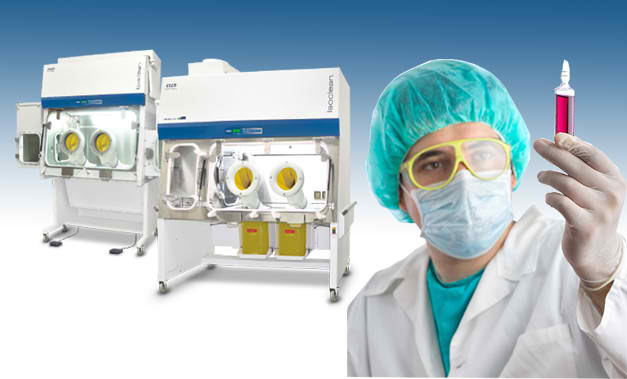The need for engineering controls in preventing compounding pharmacy mishaps

Pharmacy compounding has been present since the beginning of time. It is essential in cases such as limited dosage strengths and dosage forms, drug allergies to certain ingredients, paediatrics, chemotherapy and veterinary medicine.
Despite the importance of compounding, there are risks associated with this practice. Compounded preparations are not FDA-approved and there are cases that preparations are compounded under unsanitary conditions. These contaminated preparations expose the patients to even greater risks.
Through the years, compounding mishaps have been documented. Unfortunately, some of these incidents resulted to injuries and death. Here are a few examples of the documented incidents.

“Compounding Pharmacists Imprisoned for Dispensing Adulterated Drugs”
Excerpts from the article by Meghan Ross of Pharmacy Times
Alabama, USA - In 2011, 19 patients were infected after receiving Total Parenteral Nutrition (TPN) solutions contaminated with Serratia marcescens. Nine of the patients died. It was discovered that the amino acid solution used as a component for the TPN was contaminated with S. marcescens. Also, the TPN was prepared, packed, or held under unsanitary conditions.
According to the DOJ press release, “Amino acid was prepared by Meds IV outside a laminar airflow workbench and was kept unrefrigerated, in a room that was not sterile, in a large pot sitting on the floor, sometimes overnight, before it was sterilized and used.”
“Producing unsafe and contaminated drugs poses a serious threat to the US public health and cannot be tolerated,” said Director George Karavetsos, of the FDA’s Office of Criminal Investigations, in a press release. “The FDA remains fully committed to aggressively pursuing those who place unsuspecting American consumers at risk by distributing adulterated drugs.”
With these alarming malpractices in pharmacy compounding, it is a must that each pharmacist and pharmacy compounding facility adhere to good pharmacy compounding practices.
Esco promotes Good Pharmacy Compounding Practices!
Good pharmacy compounding practices imply having the right facility and equipment, personnel protective equipment and standard operating procedures.
International standards and guidelines such as USP, cGMP, and PIC/S recommend the use of engineering controls.

Engineering controls are the most effective way of preventing contamination of sterile preparations. It is also used to protect the personnel and environment when handling hazardous drugs. However, it does not mean that engineering controls alone should be enough when doing pharmacy compounding.
Esco offers a variety of primary engineering controls suitable for your applications.
Non-sterile Hazardous Pharmacy Compounding
Ventilated Balance Enclosure (VBE) is designed specifically for stability and accuracy while maintaining a high level of operator protection by containing hazardous airborne powder.
Sterile Non-hazardous Pharmacy Compounding
Esco’s compounding isolators (positive pressure models) provide a safe and clean environment for compounding of non-hazardous, sterile drug preparation and IV admixtures in compliance with USP 797.




Sterile Hazardous Pharmacy Compounding
Esco’s compounding isolators (negative pressure models) are designed to provide user, product, environment, and cross-contamination protection from exposure to hazardous drugs.

*Isoclean® Healthcare Platform Isolators, Containment Barrier Isolator and General Processing Platform Isolators can be used for sterile hazardous pharmacy compounding if they are negatively pressurized.
Through these engineering controls aligned with good pharmacy compounding practices, the risk of contamination will be greatly reduced. Moreover, the safety of the personnel, patient, and environment is further ensured when handling hazardous drugs.
References: Multistate Outbreak of Fungal Meningitis and Other Infections | CDC. 2016. Multistate Outbreak of Fungal Meningitis and Other Infections | CDC. [ONLINE] Available at: https://www.cdc.gov/hai/outbreaks/meningitis.html. [Accessed 13 July 2016]. Pharmacy Times. 2016. Compounding Pharmacists Imprisoned for Dispensing Adulterated Drugs. [ONLINE] Available at: http://www.pharmacytimes.com/news/compounding-pharmacists-imprisoned-for-dispensing-adulterated-drugs. [Accessed 13 July 2016]. Sutton, S, 2013. GMP and Compounding Pharmacies. American Pharmaceutical Review, [Online]. 16/3, 48-59. Available at: http://www.americanpharmaceuticalreview.com/Featured-Articles/135985-GMP-and-Compounding-Pharmacies/ [Accessed 18 July 2016].
